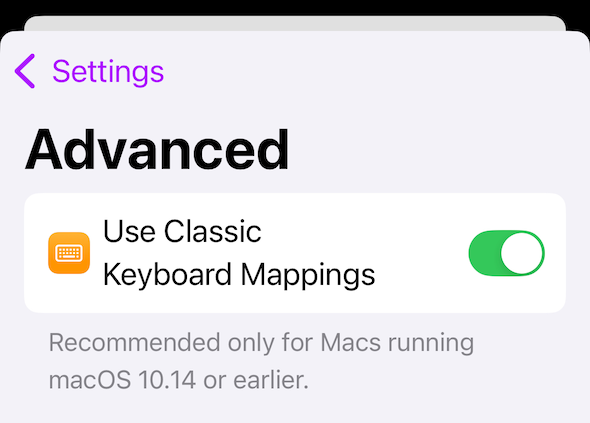Screens 5 adapts to different input methods depending on whether you are using a hardware or virtual keyboard. If you understand these differences, the connection with your remote computer will be optimal.
Hardware keyboards
If you use Screens 5 on a Mac or connect a hardware keyboard to your iPhone, iPad or Vision Pro, Screens will send keystrokes, not characters, when connected to a Mac. This means that the keyboard layout selected on the remote computer determines how these keystrokes are interpreted into characters.
Since keystrokes are layout-dependent, it is crucial for correct character entry to ensure that the correct keyboard layout is set on the remote computer.
When connecting to a non-Mac computer (Windows, Linux, Raspberry Pi, etc.), Unicode characters are sent instead of keystrokes due to VNC server limitations on these platforms.
Virtual keyboards
Screens 5 sends Unicode characters when using a software keyboard on iPhone, iPad or Vision Pro. Unlike hardware keyboards that send keystrokes, virtual keyboards send Unicode values directly. This eliminates the need to customise the keyboard language and layout between your device and the remote computer, simplifying input and improving compatibility.
This method is preferred over keystrokes, except in certain cases when connecting to a Mac.
Older macOS versions
Since macOS 10.15 Catalina, Apple has changed how the screen sharing service processes keystrokes. To take advantage of these improvements, Screens 5 now prioritises Unicode characters over key codes for better compatibility.
As of Screens 5.5.5, you can now enable legacy keyboard mappings, which are useful when connecting to older versions of macOS. You can find this option in your connection settings under Advanced:

If you are using legacy mode, make sure that the keyboard mapping of your device and the target Mac match to avoid mapping issues.
If you have any problems with your keyboard mapping, please feel free to contact us. We are here to ensure you a smooth Screens 5 experience.
